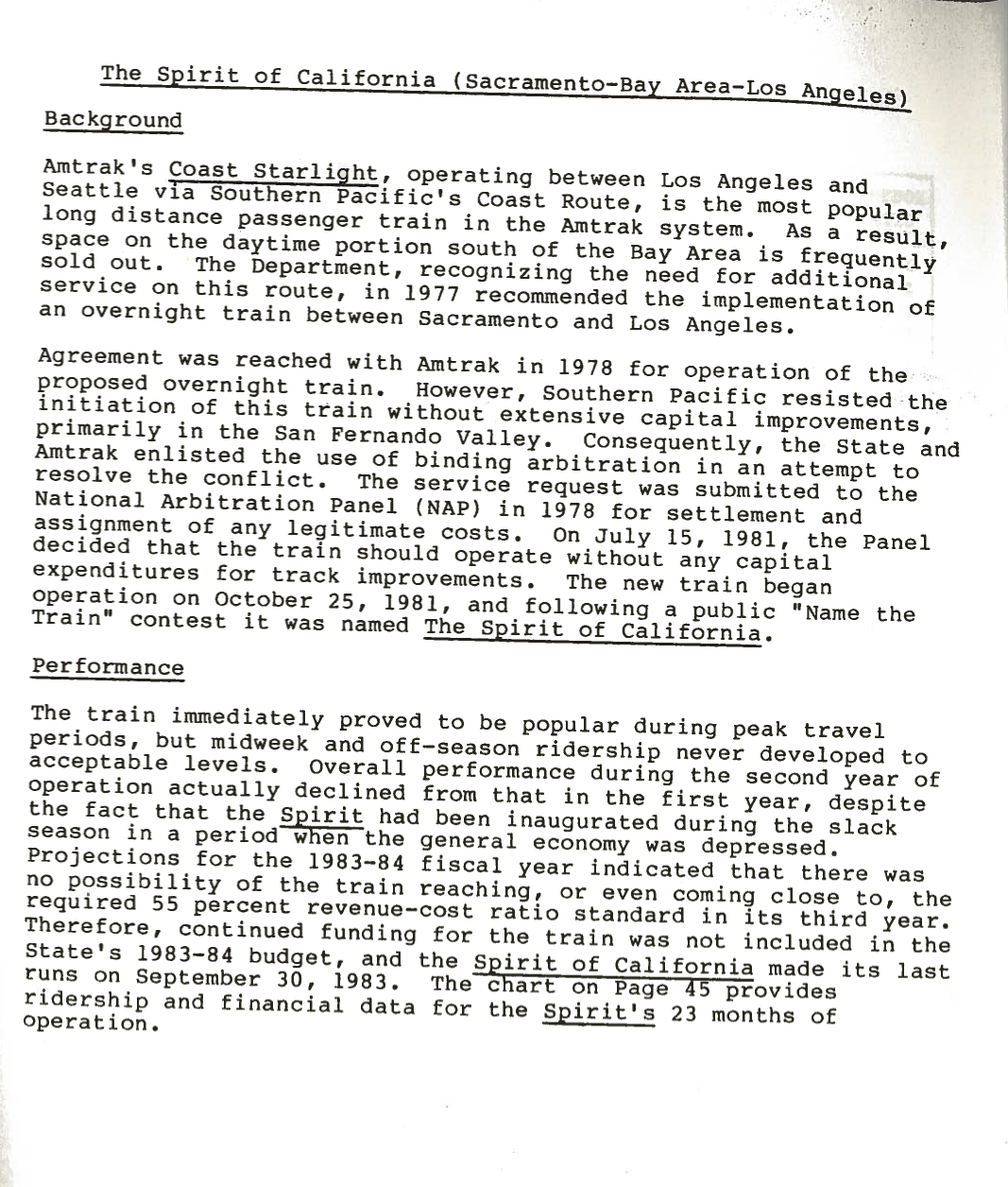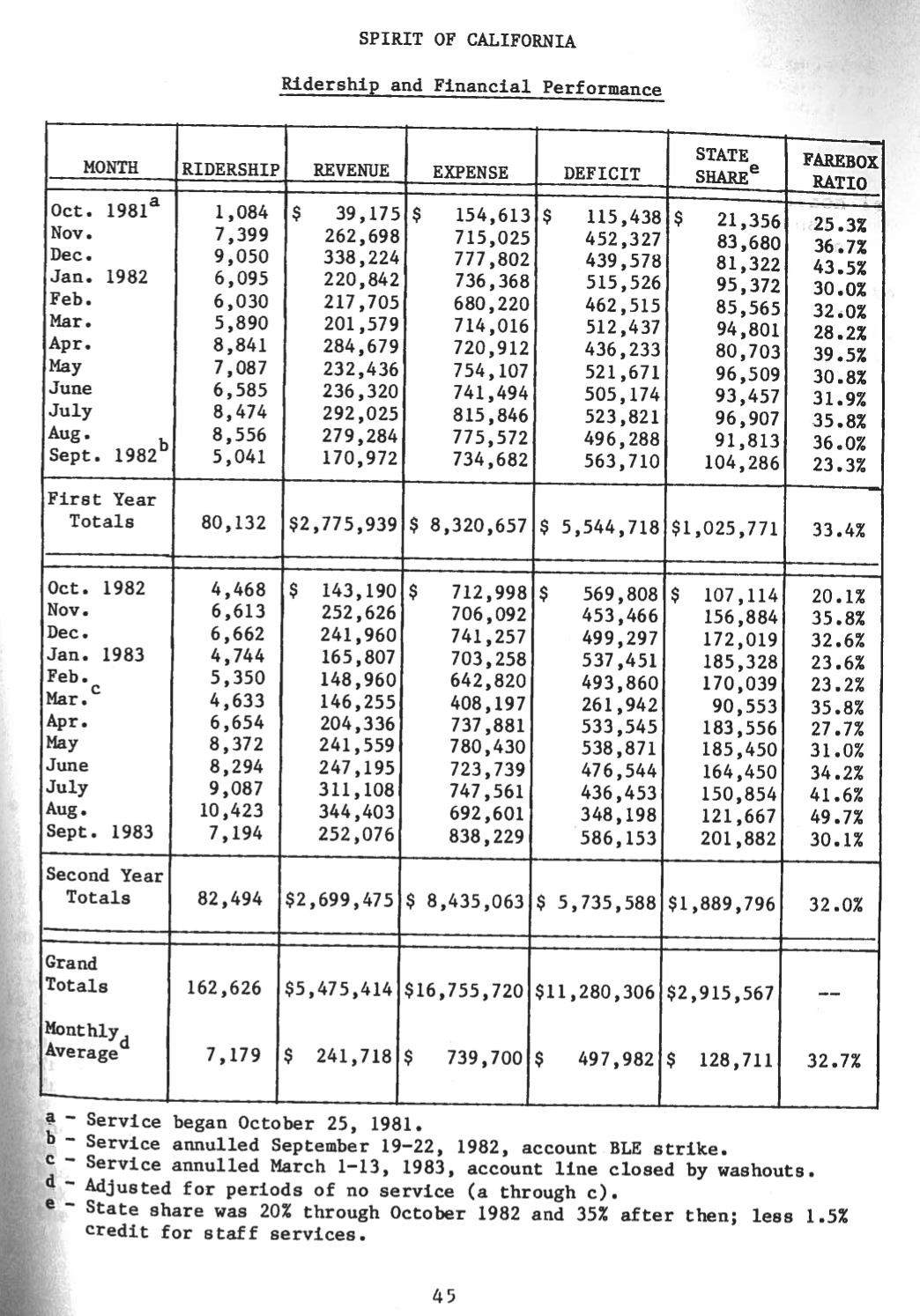(from a post i made on my facebook, and someone from here suggested for me to read the above (i did), and i can post here too...)
Hi All,
was just reading about the 1981-1983 "Spirit of California" wikepedia page.
The article states (surprisingly) the ridership projections...
but doesn't say what actual riderships were, or whether the projections were reached.
would anyone happen to know the actual data? or the source of where to look it up myself?
do any ticket clerk or passengers have any anectodal stories of whether the train was popular/unpopular?
And of course in 1981, the rail map in Calif was different, with many less trains, and as noted in this wikipedia page, the Coast Starlight did not even serve SAC back then.
Since the 1980s, we have seen the San Diegans expand all the way up to San Luis Obispo, and the creation of the entirely new Capitol Corridor with primary services SAC-San Jose (with an extension already up to auburn CA). We have seen the formation of commuter rails like metrolink and altamont express.
I know the Spirit of California train was the way, at that time, to add a second train to all these cities before the creation/extensins of these corridors - as well as to connect SAC to other california cities besides the Zephyr route.
+++
Was the Spirit of California just ahead of its time?
Would there still be demand today, seeing how all other trains were created in response to passenger demand, for an overnight LAX-SJC-OKJ-SAC (and probably even to RNO) train?
I would like it as a way to travel and save money/time on hotelery. But what about other passengers?
I suppose many would just fly LAX-SFO or LAX-SAC maybe, but seems like i still hear of many people driving the route - and of course flights would do nothing for enroute cities.
https://en.wikipedia.org/wiki/Spirit_of_California
























































